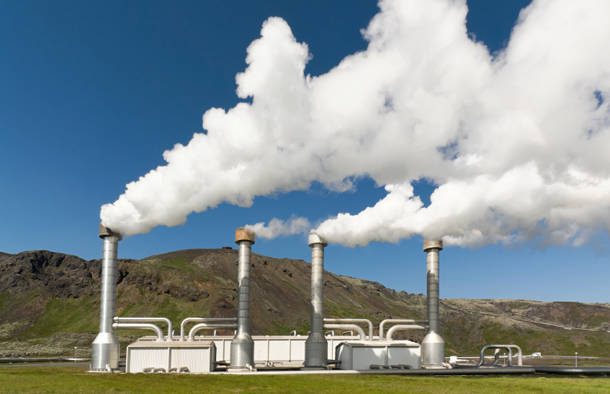By Matthew Thomas
The Vincentian newspaper of June 1, 2018, under the caption: PARLIAMENT GETS UPDATE ON GEOTHERMAL PROJECT, wrote, “According to Prime Minister Dr. Ralph Gonsalves, the contract for this phase of the project was awarded to Kelectric Company Ltd. and signed on May 16, 2018.
“The civil works include the construction of a water supply system with up to 1.5Km of pipeline from the Rabacca River to the drill pad site.”
Alternative sources of energy
There is much debate globally about the devastating impact of fossil fuel on climate change. Every effort is being made to limit the use of fossil fuel. Among the alternatives are: hydroelectric, geothermal, wind and solar. St. Vincent and the Grenadines’ Prime Minister Ralph Gonsalves seems to have a penchant for the subject of climate change and alternative energy. To show the extent of his commitment, he has even appointed his daughter, Isis Gonsalves, as Special Advisor at the St. Vincent and the Grenadines UN Mission in New York and invariably his wife Eloise Gonsalves forms part of any delegation to forums on climate change and or alternative energy. The following three media excerpts confirm this.
- ‘Witness News of Nov. 13, 2016 under the caption: PM GONSALVES LEADS DELEGATION TO CLIMATE TALKS IN MOROCCO, wrote:
“The presence of Gonsalves at the 22nd Session of the Conference of Parties to the UN Framework Convention on Climate change represents the highest-ranking official that SVG has or any of its CARICOM counterparts has sent in recent years. The presence of Gonsalves and his delegation, though it contains no technical experts would be welcomed news to CARICOM negotiators… The other members of the delegation are the Prime Minister’s wife, Eloise Gonsalves…” (Emphases added)
- NEWS 784 of Jan. 1, 2017, under the caption: GONSALVES AMONG INTERNATIONAL POLICY MAKERS ATTENDING IRENA MEETING IN ABU DHABI, wrote:
“Prime Minister Gonsalves leaves the State today Tuesday 10/01/2017 with a five-member delegation… The delegation includes his wife Eloise Gonsalves, Isis Gonsalves, Special Advisor at the SVG UN Mission in New York.” The Assembly will bring together international policymakers at the premier level to discuss urgent matters related to renewable energy… The Assembly is IRENA’s ultimate decision-making authority and is made up of one representative from each member state.” (Emphases added)
- iWitness News of Jan. 1, 2017, , under the caption: PM HEADS DELEGATION TO RENEWABLE ENERGY SUMMIT IN ABU DHABI, wrote
“The delegation includes Gonsalves’ wife Eloise Gonsalves, their daughter Isis Gonsalves, Special Advisor at the SVG UN Mission in New York.” (Emphases added)
SVG’s current energy status
St. Vincent and the Grenadines (SVG) electricity supply is greater than its demand. Currently it is serviced with diesel generating plants, augmented by solar, and three hydrogenating plants. There is no rationing of electricity. SVG is by no stretch of the imagination an industrialized country. Motor vehicles, inter-island ferries, fishing vessels, speedboats, yachts, aeroplanes, and cooking gas are arguably our largest consumers of fossil energy. In SVG, electrical energy is not transferred to motor vehicles or boats. Where, therefore, is the justification for an overabundance of production of electrical energy?
The highly inflated cost of electricity to the consumer is largely responsible for the low consumption of electricity. An example of a monthly VINLEC bill reads as follows:
Energy charge on 844 units = EC$455.76
VAT 16 per cent of energy charge = EC$72.92
Fuel surcharge, rate 0.3822 of consumption = EC$322.58
Total current charges = EC$851.26
An analysis of the above shows that a cost of EC$455.76 for the consumption of 844 units, is an additional charge of EC$395.50, a whopping 86.75 per cent.
A geothermal energy plant: what is its cost to SVG?
According to Prime Minister Gonsalves, the estimated cost of the project is US$91 million, excluding transmission lines which are expected to cost between US$14-16 million. The project will be financed with a debt ratio of 65 per cent to 35 per cent. The electricity generated will be owned by SVG Geothermal Co. Ltd. It will be 51 per cent owned by Emera and Reykjavik and 49 per cent by the Government. VINLEC will purchase, for 25 years the electricity provided by the plant. SVG Geothermal Co. Ltd. will be responsible for all the cost and losses and transmission of such energy up to the delivery point and VINLEC will be responsible for all cost and losses from beyond the delivery point. (iWitness News, June 5, 2018).What is the point of delivery?
The Government is committed to:
- 35 per cent of US$107 million construction cost, that is US$37.45 million or EC$101.56 million
- Approximately 100 acres of prime agricultural lands.
- Rabacca River, which will be harnessed (dammed) principally for the purpose of supplying water to the plant.
- VINLEC is committed to purchase the electricity for 25 years, whether VINLEC needs it or not. A cost that will be subsidized by the taxpayer.
What irony
Prime Minister Gonsalves is quoted as saying that the geothermal system will:
- Help to eliminate poverty by providing cheaper electricity.
- Provide electricity through a fossil free environment.
- It is quite likely that the VINLEC consumer will be faced with another tax: The Geothermal Energy Charge. Contrary to marketing standard: higher the demand, higher the price, VINLEC’s formula is inversely proportional: lower the demand, higher the price.
To the contrary, we have lost 100 acres of prime agricultural lands, a river that has the capacity of irrigating thousands of acres. The water from the river will be pumped to plant site. It is quite likely that a diesel pump mechanism will be used.
The production of geothermal energy is not a panacea as Prime Minister Gonsalves tries to make it out to be. The proposed project is to be located at the foothills of an active volcano. The current volcanic eruption in Hawaii is a timely reminder as to what can happen, when according to reports, 60,000 gallons of stored pentane, a highly inflammable gas, a derivative of fossil fuel had to be evacuated from a geothermal plant threatened by lava flow.
Conclusion
It is not likely that fossil fuel would be replaced by any significant level in the distant future. Geothermal energy with its high level of uncertainty and high cost of construction is more likely to be a millstone around the necks of the Vincentian taxpayer. With the coming into being of oil production in Guyana, the sale of oil may well go a begging in the region. If SVG could have raised that US$107 million (EC$291 million) to boost its ailing agriculture sector, poverty could well have become alien to SVG. As it stands, the quest for geothermal energy is nothing but a show; that of keeping up with the Joneses.
The views expressed herein are those of the writer and do not necessarily represent the opinions or editorial position of iWitness News. Opinion pieces can be submitted to [email protected].
The opinions presented in this content belong to the author and may not necessarily reflect the perspectives or editorial stance of iWitness News. Opinion pieces can be submitted to [email protected].







So Kelly Glass’s company got the contract, interesting to say the least.
How many bidders were there and how was the Kelectric company selected? Have they ever done such a project before?
Perhaps Julian Francis should tell us why Kelectric was selected.
Maybe if the authors of these so called opinion pieces spent more time getting credible information from official sources, they would stop fear mongering and crying that everything is a burden to the tax payer. Left up to some, the country will never change since everything leads to a crying fest.
No but those giving out the contracts may!